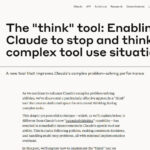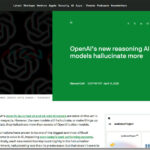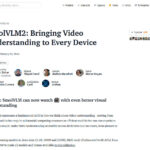The development of START (Self-Taught Reasoner with Tools) marks a significant step forward in the further development of language models. By integrating tools and innovative techniques such as Hint-infer and Hint Rejection Sampling Fine-Tuning (Hint-RFT), models not only become more powerful, but also more efficient in complex problem solving tasks. Particularly noteworthy is START’s ability to learn without extensive demonstration data and to iteratively improve itself.
Tools open up new horizons for problem solving
The ability to effectively integrate external tools is a key strength of START. While established models often reach their limits, for example with mathematical challenges or programming, START shows exceptional results:
- Mathematical benchmark tests (AMC23 and AIME24) with accuracy values of up to 95%.
- Scientific questions at the highest level (PhD level, 63.6 % correct answers).
- Code generation on LiveCodeBench with 47.3 %, an area in which many language models often show weaknesses.
The integration of tools enables the model to not only perform calculations, but also to check results and explore different approaches. This provides enormous added value, particularly in fields such as research, engineering or data science.
Existing approaches expanded and optimized
START’s advances are based on the foundations of proven approaches, such as content-based learning like Toolformer or special data sets like Toolbench. However, a new standard is being created with Hint-infer, which incorporates artificial hints while the model is being used, and Hint-RFT, which explains and optimizes faulty trajectories: Tools are not only incorporated, but actively integrated into the learning processes.
The practical applications of such models are extensive: from automation in software development to the creation of complex scientific analyses. At the same time, START eliminates central weaknesses of traditional models such as hallucinations and a lack of self-correction capability.
Relevance for the AI market and the next steps
The results show that the industry-wide focus on improving tool usage through language models holds significant potential. START’s ability to achieve autonomous improvements in combination with tools signals future trends in self-learning AI.
The question for companies and developers is: how will such models be integrated into the product landscape and everyday work processes? START’s overarching approach could find broad acceptance in applications such as personal assistance software, automation or even creative tools. The research lays the foundation for highly specific tools with broad application – which could have a significant impact on existing competitive conditions in the AI sector.
The most important facts about the update:
- START improves language models through tool integration and independent learning.
- Innovative approaches such as Hint-infer optimize the use of tools without demonstration data.
- Outstanding benchmark performance represents progress in math, science and programming.
- Comparable and in parts superior to current models such as R1-Distill-Qwen-32B and OpenAI’s o1-Preview.
- Broad application potential in research, engineering and analysis tools.
Source: Arxiv







